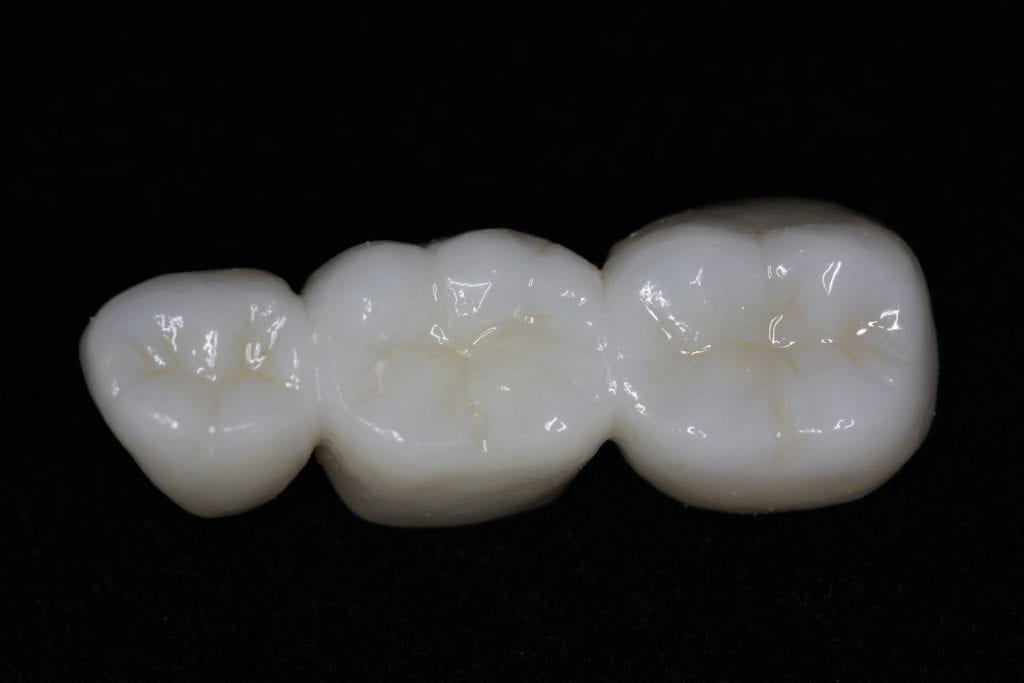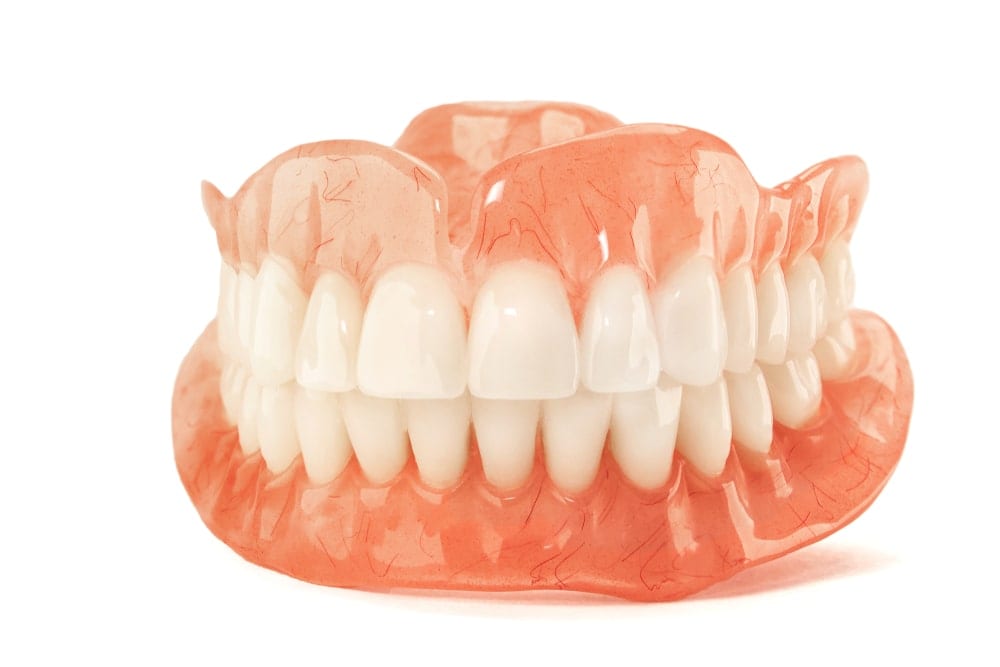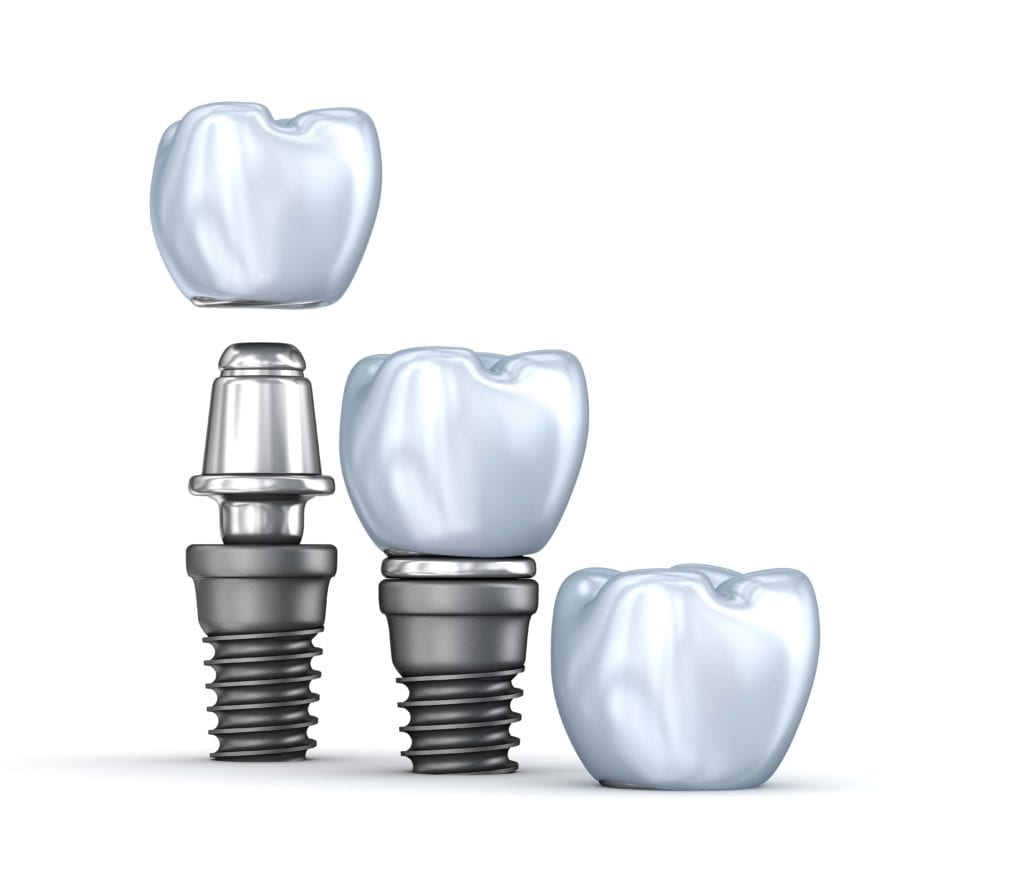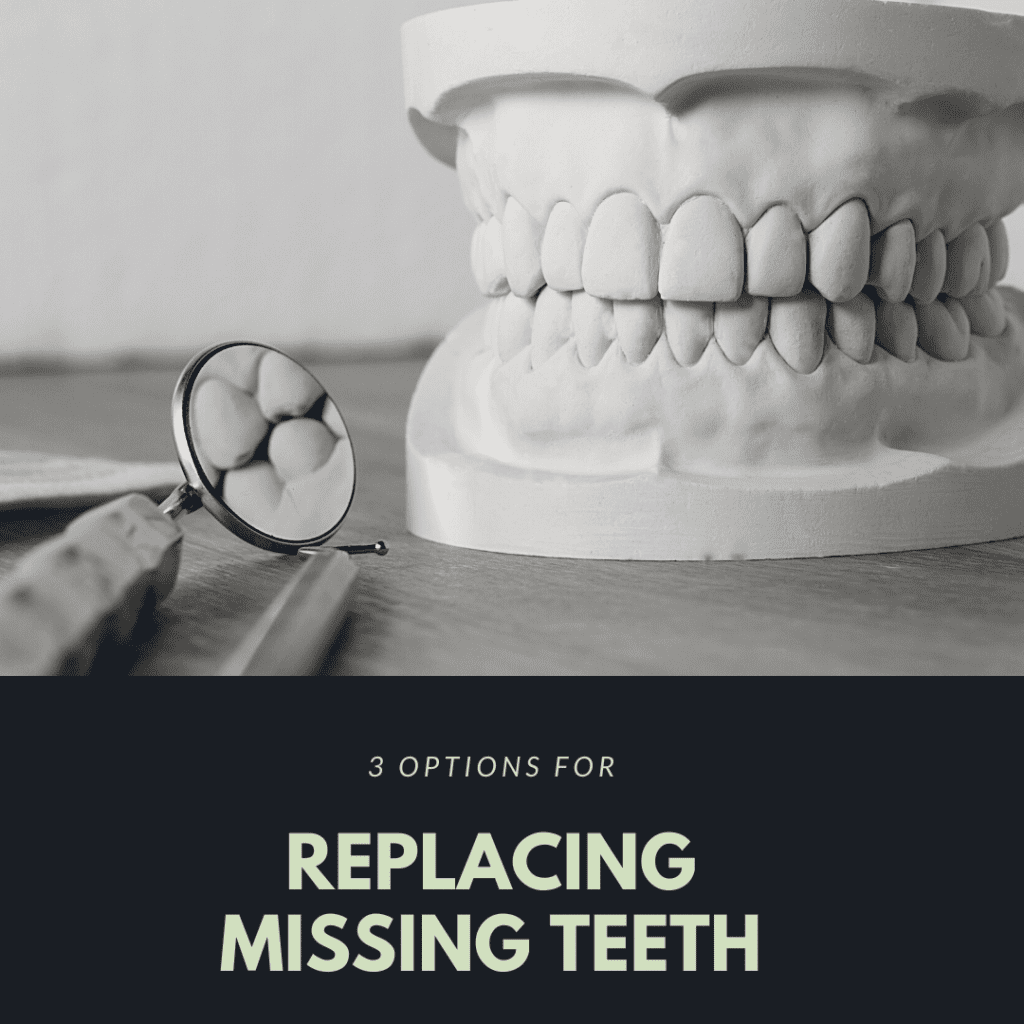Teeth can fall out as a result of dental trauma or they can be extracted due to severe damage or decay. Regardless of how a tooth was lost, it will need to be replaced in order to avoid future complications. Since humans have only one set of permanent teeth, when a tooth goes missing it will need to be replaced using a dental restoration such as a bridge, denture, or implant.
All three of these restorations are designed to replace one or more missing teeth. Replacing missing teeth is important because it prevents the adjacent and opposing teeth from slowly moving into the space left by the missing tooth. By not replacing the tooth, you risk problems with your bite alignment, as well as teeth that may wear prematurely or become damaged. Additionally, replacing missing teeth also allows you to maintain your ability to chew, speak clearly, and smile beautifully.
Although bridges, dentures, and dental implants all replace missing teeth, they each offer a slightly different approach. Because of this, one option may be better for you than another. While only a consultation with your dentist can help you decide which option is best for you, here is a brief overview of these options:
Dental Bridges

A dental bridge can replace one or more missing teeth that are surrounded by existing teeth. There are different types of bridges, but the most commonly used is a traditional dental bridge, which is composed of one or more fake teeth fused together with a dental crown on either side. The dental crowns are cemented over the tooth on either side of the bridge, while the fake teeth fill in the gap left by the missing teeth. This restores both the look and function of the teeth, as well as maintains the position of the bite and any remaining teeth. When having a dental bridge placed, the teeth receiving the dental crowns must be prepared by reducing them in size to allow for the placement of a dental crown. Once the teeth have been prepared, a dental impression will be taken and used to fabricate the bridge. A second appointment will be needed to check the fit of the bridge and to cement it in place. Most dental bridges will last around 10-15 years if cared for properly.
Dentures

Dentures are used to replace an entire mouthful of missing teeth. In fact, traditional dentures can only be used when there are no teeth in the mouth. As a result, any remaining teeth will need to be extracted prior to getting dentures. This is because the denture base is held to the gums using suction and relies on an even surface to maintain this suction. The denture base can be fabricated using acrylic or resin and is made to resemble gum tissue. Attached to the base are multiple fake teeth usually made from porcelain or ceramic dental materials. Some people have trouble adjusting to dentures in the beginning, however dentures can restore eating and speaking functions once you’ve adjusted to them. Dentures are also removable and must be removed every night. They will also need to be refitted every few years because the jawbone will change shape and they will no longer fit properly.
Dental Implants

Dental implants are used to replace any number of missing teeth. This is because they are artificial tooth roots that support a dental prosthetic. The type of dental prosthetic depends upon the number of missing teeth. Implant-supported crowns are used to replace a single tooth, implant-supported bridges are used to replace multiple missing teeth, and implant-supported dentures are used to replace an entire mouthful of missing teeth. Unlike traditional bridges or traditional dentures, dental implants are placed in the jawbone where they will fuse with the surrounding bone in order to support the necessary prosthetic. Although this requires a minor oral surgery and multiple office visits, many people are happy with dental implants because they are extremely strong, durable, and aesthetic. Dental implants also preserve bone mass and can last around 20 years.

Dr. Admar holds dual certificates — a Bachelor of Dental Surgery (BDS) in 2010 from India and a Doctor of Dental Surgery (DDS) in 2014 from Canada. He is now a full time practicing dentist in Kamloops where he provides a variety of services. Dr. Admar spends hundreds of hours in continued dental education to stay up to date in cosmetic and implant dentistry and he has achieved several advanced qualifications.


